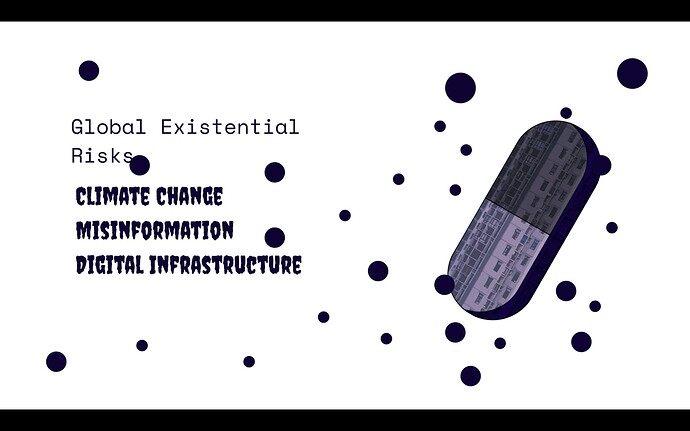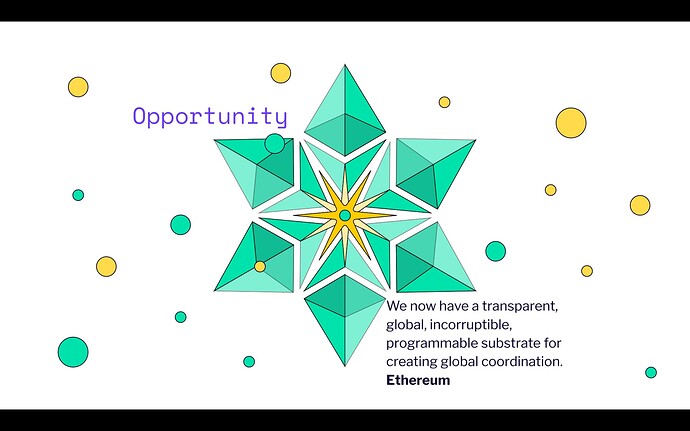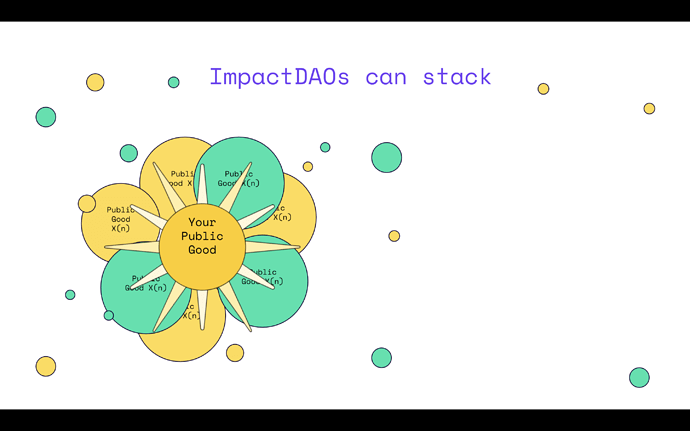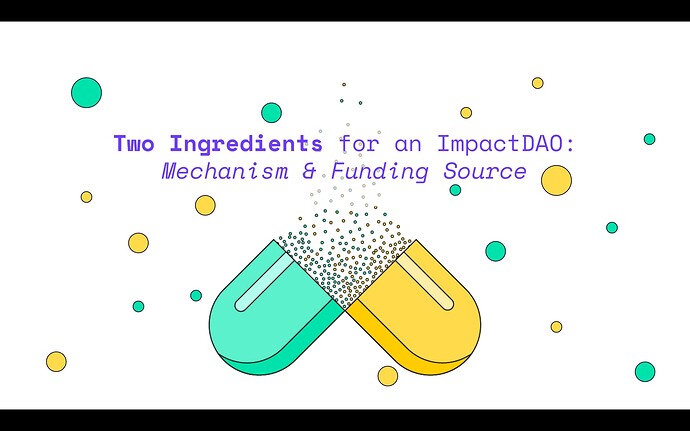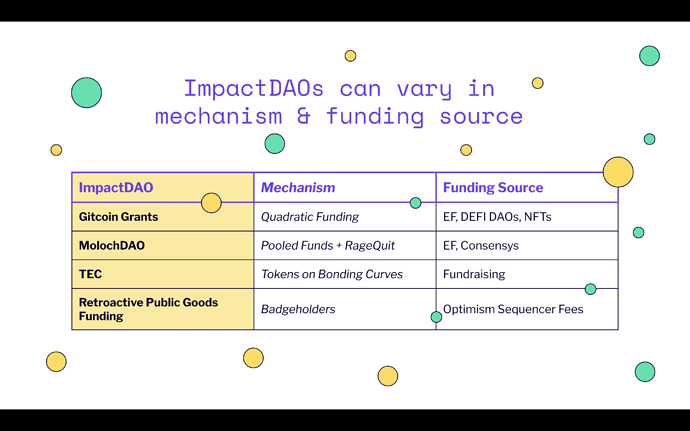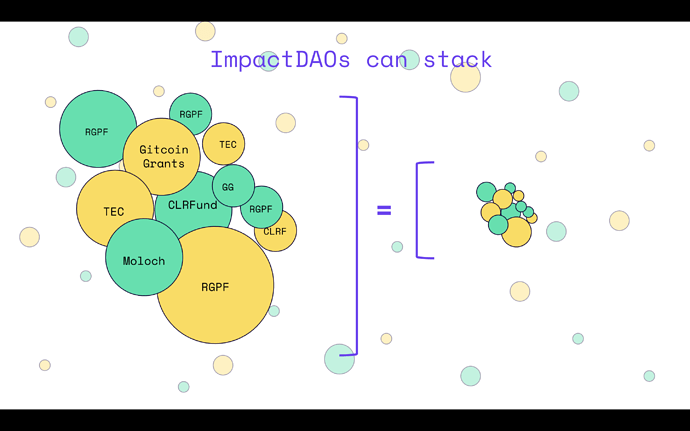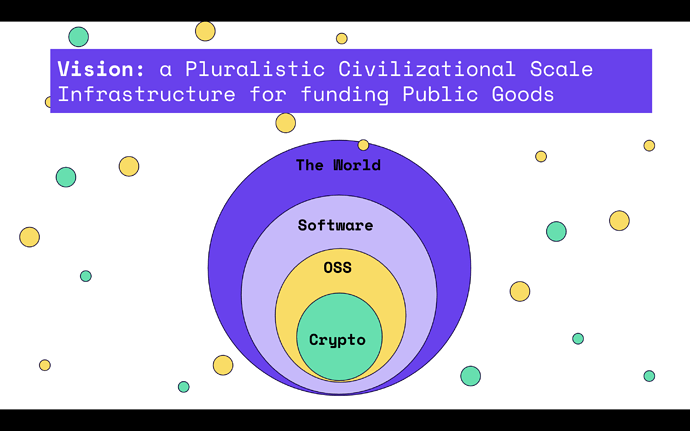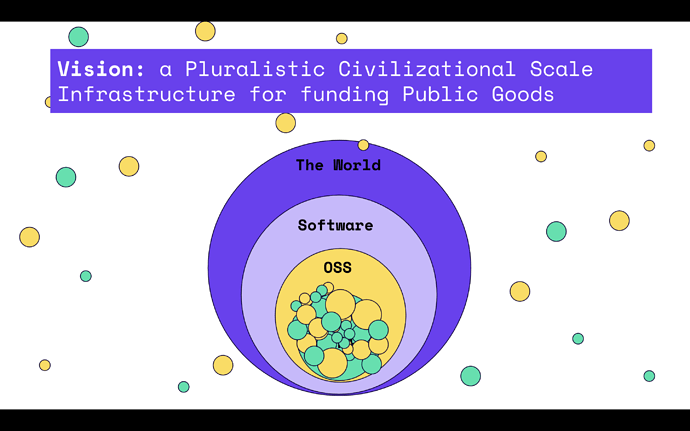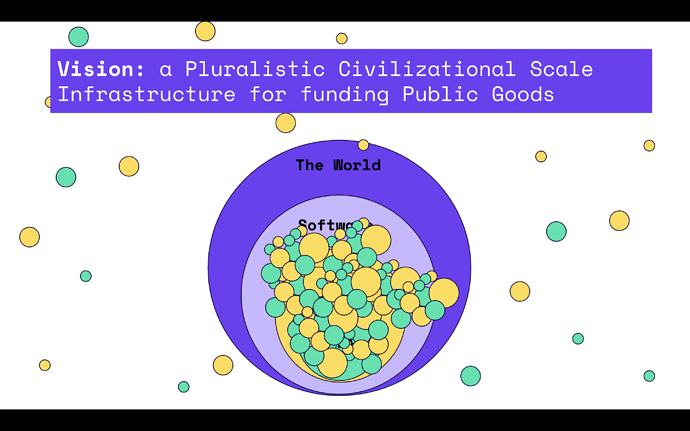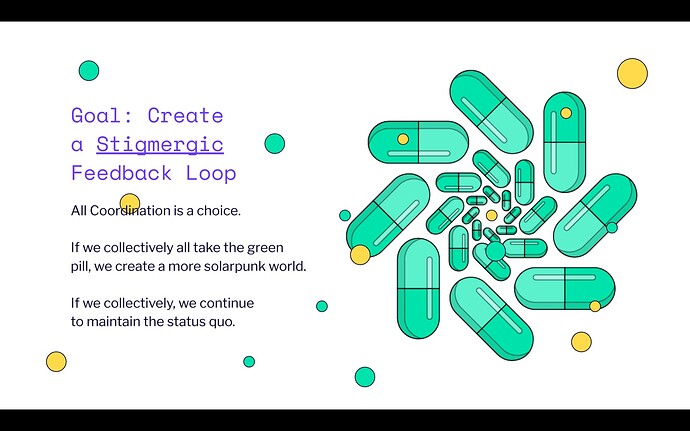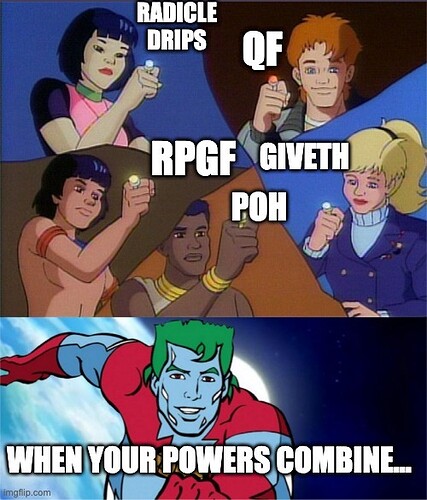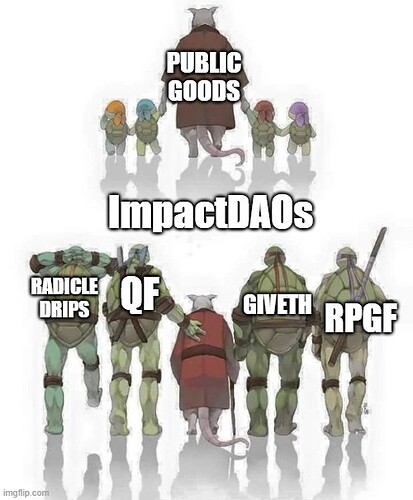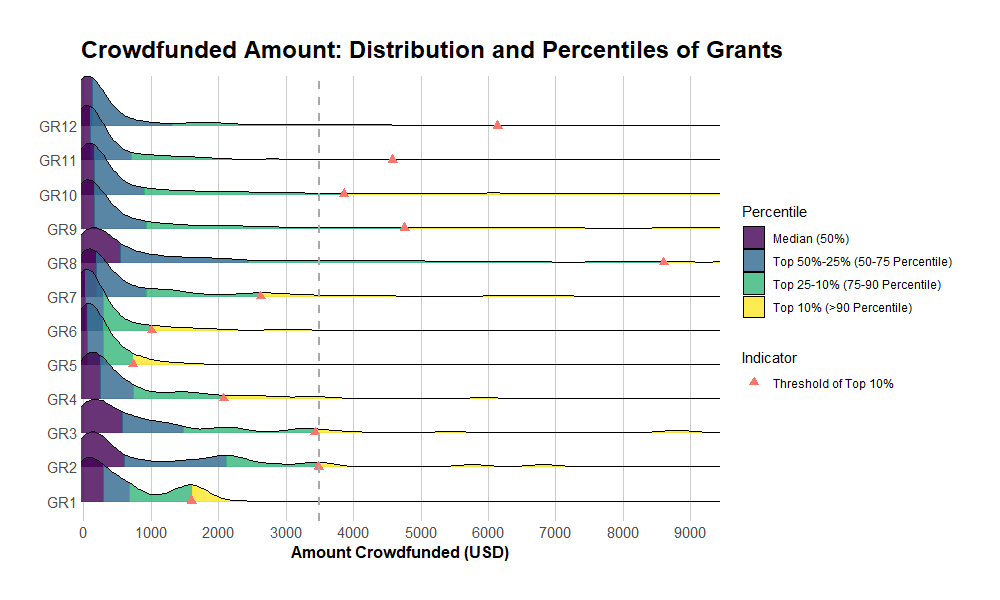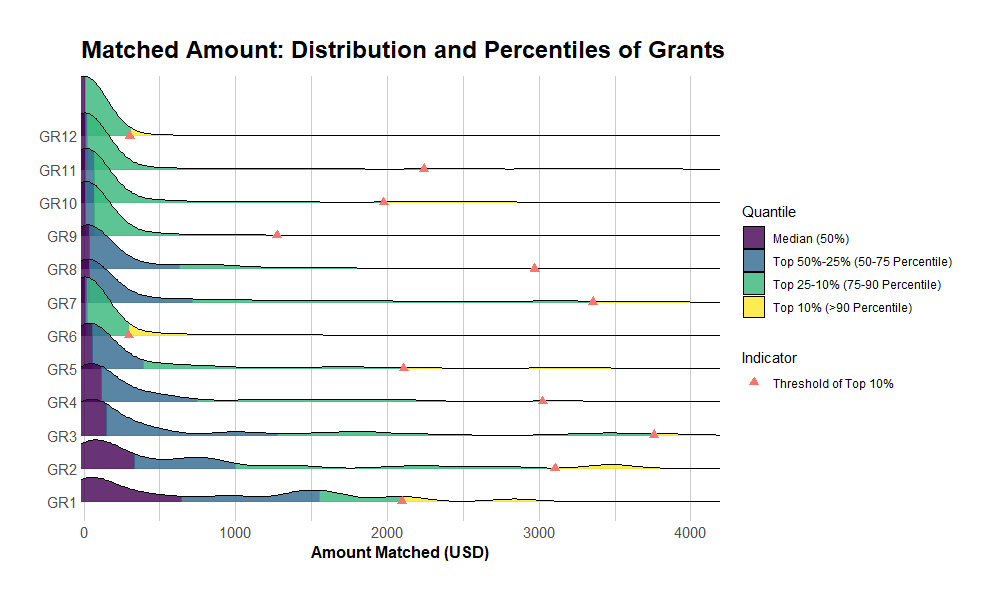EDIT May 2023: This post is now available as a youtube video or twitter thread
The objective of this post is to articulate how ImpactDAOS on Ethereum could scale to support all different types of public goods.
I envision a Public Goods Rebel Alliance that grows to build, fund, and maintain all sorts of public goods. Such an alliance would be a pluralistic, global, decoupled, & decentralized public goods funding juggernaut (as opposed to our legacy infrastructure which is comprised of (1) nation-state governments which is highly coupled + only serves the public goods of its citizens & (2) NGOs, which are high administrative overhead and generally dependent upon large donors ).
I believe that the internet of money is the fundamental paradigm shift that enables the creation of this infrastructure.
Just as anything that relied upon information was deeply changed by the original internet, I believe that the internet of money will enable a deep structural change in how value transfer occurs in society. While most of the digital asset market is focused on banking (DeFi) and art (NFTs), I remain focused on long tail use cases like The Internet of Jobs and digital public goods.
We are early. I do not have all of the questions answered and do not claim to. Instead, this post is merely a sketch of how I see several pieces of scaffolding coming together.
Vision: A Pluralistic Civilizational Scale Infrastructure for funding Public Goods
There are existential risks that the nation-state public good architecture is not well set up to handle.
- Climate change is a global existential risk that is not bounded to any nation.
- Misinformation is a global existential risk that is not bounded to any nation.
- Underfunded Digital Infrastructure is a global existential risk that is not bounded to any nation.
- There are many many others: nuclear proliferation, environmental risks like deforestation or pollution, resource shortages, etc.
These challenges are what keep me coming back to work on these problems. On a very deep level, I don’t want to live in a world where these challenges dominate my life or the lifes of my loved ones.
We should provide an infrastructure that is global in scope, which can address these unmet challenges.
But how?
This is why I think that programmable blockchains, especially Ethereum are so important. They are a meaningful, incorruptible, programmable, substrate for global coordination. And because they have got the future of finance riding on their rails, they could be incredibly powerful.
There are many meaningful things happening on blockchain systems that are worthy of our time and attention, but my focal point for this discussion is on DAOs. DAOs, for the purpose of this post, I will define broadly as “digital organizations”. They are a group of people with a shared bank account and shared purpose.
There are 100s of DAOs out there and many many different sub-types of DAOs. A particular type of DAO that I think is interesting and important is an ImpactDAO. An ImpactDAO is any DAO that provides a positive externality, especially positive externalities for the public (not captured by any group).
I believe that these ImpactDAOs are the fundamental atomic building block for the movement towards supporting digital public goods. Towards a Pluralistic Civilizational Scale Infrastructure for funding Public Goods.
Some examples of ImpactDAOs:
- Proof Of Humanity creates the public good of more sybil resistance, which could usher in a world of one-human-one-vote digital democracy.
- KlimaDAO creates the public goods of funding for those doing important carbon capture work.
- GitcoinDAO creates the public good of funding for other public goods.
- There are many more examples, these are just a few.
What I think is interesting about these ImpactDAOs can stack upon each other. For example, an ImpactDAO for funding carbon credits, relies on our Ethereum infrastructure, which relies upon our broader digital infrastructure.
And it is upon this insight that we build our stack of an unbundled public goods funding infrastructure.
If you as a developer who is working on an ImpactDAO can focus on your own discrete mission, you can
- create positive externalities to the world.
- create positive externalities up the ImpactDAO stack, especially to projects that rely upon you.
- benefit from positive externalities down the ImpactDAO stack.
This isnt merely hypothetical. Gitcoin has delivered $50mm in public goods funding so far. In Gitcoin Grants Round 12, we begun to expand upon our side rounds strategy. GR12 contained.
- a main Ethereum round for funding Ethereum public goods
- an advocacy round for funding digital advocacy projects.
- a longevity round for funding life longevity projects.
- a climate round for funding life climate change projects.
- several rounds for adjacent ecosystems to fund their public goods: Forefront, Polygon, Uniswap, Zk Privacy, etc…
What i think is super cool about this is how the Quadratic Funding Matching can stack when a grant is in multiple rounds. If a $1 donation would generate a $75 matching donation for a grant in the main pool, then the same grant in 3 pools could have a $1 donation generate a $500 matching donation.
This in fact did happen for Coin Center during GR12. The matching multiple was so good that the twitterati though it was too good to be true. ![]()
This is an extremely powerful primitive! If each QF matching pool is like a fan, then the combination of several matching pools together is like a jet engine!
Of course, Quadratic Funding is not the only game in town. Nor should it be.
I do not think this post would be legitimate if I was not advocating for a Pluralistic Infrastructure for funding Public Goods.
Just as ETH2 client diversity is important, I believe that public goods funding mechanism diversity is important too!
So lets talk about the ingredients that make ImpactDAOs legitimate and meaningful. I am of the belief that there are two main ingredients.
- a funding source
- and a mechanism for allocating attention and resources to places where they have impact.
There are many meaningful ImpactDAOs out there that provide mechanisms for creating impact. Some of the ones I’m most excited about are noted in the slides below (but there are many many more!)
Zooming back out - when we return to our view of how public goods can stack, let us note the diversity of mechanisms and funding sources that can make up a cluster of ImpactDAOs.
Zooming further out, let us again note that we are all standing on the shoulders of giants. Dozens of diverse ImpactDAOs standing upon each other are greater than the whole of their composite parts.
From here, we can begin to sketch an architecture of how our nascent Ethereum-based public good can begin to scale to a pluralistic civilizational scale public goods funding infrastructure.
As Marc Andresson once said, “Software is eating the world”. In a world increasingly intermediated by (and coordinated by) software, this is a tailwind for deploying a novel & foundational infrastructure for funding public goods to the world.
With these tailwinds, we can begin to think about how Ethereum-based public goods, which are starting to generate a lot of heat, could begin to expand to positively affect things outside of our nascent ecosystem.
Because of how these ImpactDAOs stack and force multiply (remember - one QF round is like a fan, many is like a jet engine), and because each ImpactDAO is forkable to be used in different domains, we begin can to envision how ImpactDAOs could proliferate to traditional OSS, to all digital projects, and possibly to impact the global scale public goods problems we noted in the beginning.
Of course, I’d be remiss if I didn’t note that this is a future that we collectively have to choose. The market will decide if it cares about ImpactDAOs or not. Perhaps the market will choose that it only cares about Degen type use cases.
All coordination is a choice. We have to choose this future, not only in the types of assets we support in our financial lifes, but also in where we put our scarce time, attention, and skills.
My goal with writing this post (and with much of the other work Gitcoin is doing) is to create a stigmergic feedback loop which helps to increase the chances of addressing the challenges outlined at the top of the post…
I envision a web-scale public goods funding infrastructure replacing some of the places where nation states are receding in their support for public goods (or were never good at supporting public goods in the first place). in the old world, public goods were oriented around nation state. in the new world, they’ll be based upon your online niche/community you belong to. were in the middle of a great re-indexing from nation-states to niches. niches are the new nation-states insofar as as this public goods funding spreads outward, niches (not geography) will be the aqueduct that carries the liquidity outward to the world.
I want to end on a pragmatic note, and acknowledge to you that there are risks and other unsolved problems here.
I don’t exactly have this all figured out yet, but I am only to provide a scaffold of an architecture that could begin to solve these problems.
Here are some problems/risks I think we should be mindful of.
- You should be wary of any charismatic leader who claims to have the answers, including myself. Do your own research, form your own opinions, ask the hard questions. Do not accept arguments from authority.
- How we make collective decisions to value these problems and the solutions to them is an extremely high order bit. How does a market of participants decide to value climate action vs digital infrastructure vs fighting misinformation? I am worried that markets of participants follow things that are lower in the brainstem (charismatic leaders, memes, and brands) moreso than rationalist things like fundamentals.
- We are awash in mechanisms to organize attention & financial resources (like Quadratic Funding), but we do not yet have sustainable financial resources to fund ImpactDAOs. I know this challenge first hand as I hustle ever quarter to get more capital into the Gitcoin Grants matching pools. Maybe one day nation-state governments will realize these ImpactDAOs are more effective and lower overhead than their predecessors and take revenues from taxation and put them into these mechanisms. But until that day I will continue to hustle.
- I worry a lot about The Matthew Effect, the fundamental law of economic systems that says that the “rich get richer”. We need to find a way to defy this law of economic systems lest this infrastructure become captured by the elite, just like the infrastructure that preceded it was.
- To a hammer, everything looks like a nail. To an Blockchain Developer, everything looks like a problem money can solve. I think we should be mindful that there is meaningful organic local action happening in many niches, and our job is to play a supporting role in amplifying the impact of these local leaders. The financial system is a enabling channel for greater combinations of strength/intelligence to arise, not an end in itself.
- Many of the existing mechanisms are Keynesian beauty contests. Mechanisms which are not Keynesian beauty contests will be important components of this infrastructure.
- What did I miss? feel free to add constructive critique of this piece in the comments.


